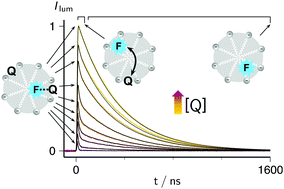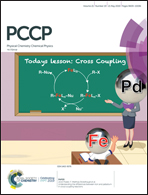Combined static and dynamic intramicellar fluorescence quenching: effects on stationary and time-resolved Stern–Volmer experiments
Abstract
We have conducted a theoretical and experimental study of Stern–Volmer experiments in micellar systems for the important case that fluorophore and quencher remain confined to their micelle during the luminescence decay (the “immobile probe/immobile quencher” scenario) and exhibit static quenching followed by dynamic quenching. By a comparative mathematical analysis, we have exposed inherent physical and mathematical contradictions of earlier theories. We present a general framework that allows a very simple derivation of consistent solutions. Even with the correct model, strong parameter correlations severely compromise fit uniqueness when the stationary luminescence is the only observable, but these correlations can be removed by parallel absorption measurements and do not occur in time-resolved luminescence experiments. The application of our protocol to pyrene quenching by substituted viologens in SDS micelles revealed a linear dependence of the apparent aggregation number of the surfactant on the equilibrium constant of formation of ground-state complexes, which can be quantitatively explained by a preference of the quencher for micelles containing the fluorophore. The complex formation is entropy controlled, as evidenced by a driving force that decreases linearly with the number of free rotors in the viologen sidechains.



 Please wait while we load your content...
Please wait while we load your content...